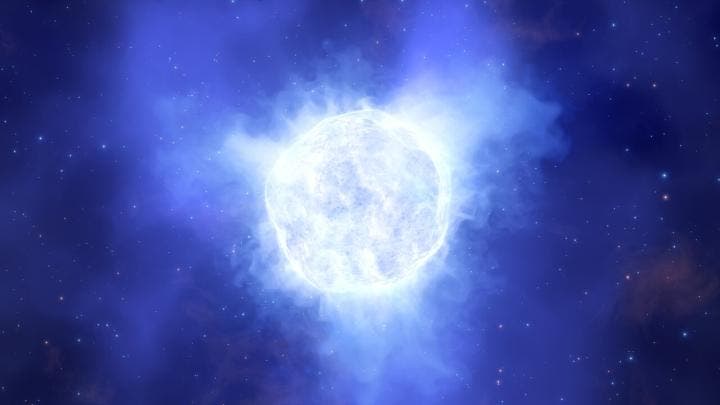
Researchers affiliated with European Southern Observatory (ESO) have caught a massive star in the midst of a disappearing act. Typically, stars in its class end their life cycle with a bang, in a supernova — the most powerful explosion in the universe. However, the star disappeared without a trace, perhaps directly collapsing into a black hole, with important consequences for astronomy.
Astronomers have been tracking the luminous blue variable star located in the Kinman Dwarf galaxy since 2001. The extremely massive star was of particular interest because scientists still don’t know much about how such objects behave towards the end of their lifetimes, especially in metal-poor environments such as the Kinman Dwarf galaxy.
Andrew Allan of Trinity College Dublin, along with colleagues from Chile and the US, pointed ESO’s Very Large Telescope (VLT) in Chile’s Atacama Desert towards the distant galaxy in 2019 for a new survey. Much to their surprise, the star’s signal vanished.
How could such a luminous star, which was about 2.5 million times brighter than the sun, simply disappear? That’s still a mystery, but Allan’s team has some ideas.
“One of the most memorable moments was when we noted the absence of the massive star signature in our first observation which was obtained with the ESPRESSO instrument of ESO’s Very Large Telescope. As the conditions were not perfect on the day this observation was made, we wanted to make sure the signature was absent. For this, we needed to request a follow-up observation. This is usually a long process, however as Ireland recently agreed to join ESO, we were able to apply for a fast-track observation reserved for important unusual events. This time we used the X-Shooter instrument of the Very Large Telescope and were happy to find that this also pointed towards the star disappearing!” Allan told ZME Science in an e-mail.
Although it is extremely unusual for such a massive star to disappear without producing a bright supernova explosion, old data supplied by the ESO Science Archive Facility suggests that the massive object could have been undergoing a strong outburst period that likely ended sometime after 2011.
“This indicated the extreme nature of the massive star and was achieved by developing computer simulations,” Allan said.
Based on their observations, the researchers think that there are only two plausible explanations for the star’s sudden disappearance and lack of a supernova.
In one scenario, the outburst may have ‘downgraded’ the luminous blue variable star into a less bright star, whose signature may be partly obstructed by dust.
The second, more exciting, explanation is that the star could have simply collapsed into a black hole.
Massive stars usually end their life cycle by exploding into a supernova. What’s left of the star either turns into a neutron star or a black hole. However, the absence of a supernova in such cases is almost unprecedented.
“If true, this would have major implications for astronomy. Such an event has been observed only once, in the galaxy of NGC 6946 where a smaller massive star seemed to disappear without a bright supernova explosion. The larger mass of the star we study as well as it being from a low metallicity galaxy makes the finding unique and could hold important clues as to how stars could collapse to a black hole without producing a bright supernova,” Allen said.
The astronomers will have the chance to find out more about the star’s fate once ESO’s Extremely Large Telescope (ELT) comes into operation in 2025. ELT can image at high resolution very distant stars such as those in Kinman Dwarf, which is located more than 75 million light-years away. In the meantime, Allen and colleagues plan on performing additional observations with the Hubble Space Telescope.
“As Hubble already imaged the galaxy prior to the star’s disappearance, we are hoping this will enable us to confirm the star’s disappearance and determine the true cause of its disappearance,” Allan said.
The findings appeared in the Monthly Notices of the Royal Astronomical Society.






